| March 10, 2020 | Volume 16 Issue 10 |
|
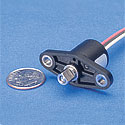 | Compact Angle Sensor
Novotechnik's Vert-X 1600 Series of angle sensors features easy mounting in tight spaces with a 16 mm diameter body. The sensors measure 0 to 360° with linearity ≤ ±0.3%, 14-bit resolution and repeatability to 0.1°. A variety of analog and digital output options are available.
Learn more. |
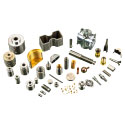 | Leak-Tight Electroformed Metal Bellows with an Infinite Cycle Life
Servometer electrodeposited bellows are available in a wide range of sizes, lengths and materials including nickel, copper, gold and silver. They can be custom manufactured in various wall thicknesses with outer diameters ranging from 0.020 inch to 12.0 inches and convolution lengths as long as 18.0 inches. We also have 16 standard sizes that come right off the shelf and are ready to test in your next OEM project. These bellows are available for quick purchase and delivery.
See the standard bellows sizes. |
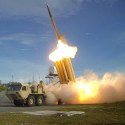 | 3D printing: Army works on cutting-edge munitions
Army researchers are exploring additive manufacturing technology through a program designed to push the application of 3D printing to new boundaries. The research effort consists of three core teams specializing in energetics, metals, and hybrid additive manufacturing of munitions technologies, along with a design science team that brings together manufacturing and geometric design.
Read the full article. |
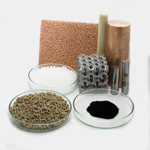 | Materials in small quantities for prototyping and research
A wide range of pure metals, alloys, polymers, ceramics, composites, nanomaterials, compounds and other materials in many forms are available in small quantities (a single piece, a few grams to a few kilos) for research, prototype development and specialized manufacturing. No minimum order requirement; shipping usually within 24-48 hours. Custom fabrication and finishing as well as larger quantities also available.
Learn more from Goodfellow. |
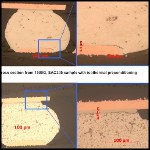 | Top 5 reasons for solder joint failure
Solder joint reliability is often a pain point in the design of an electronic system. According to Tyler Ferris at ANSYS, a wide variety of factors affect solder joint reliability, and any one of them can drastically reduce joint lifetime. Properly identifying and mitigating potential causes of solder joint failure during the design and manufacturing process can prevent costly and difficult-to-solve problems later in a product lifecycle.
Read this informative ANSYS blog. |
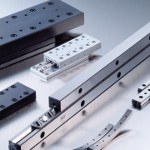 | Basics of crossed roller bearings
Crossed roller bearings provide more accuracy, rigidity, and weight-bearing capacity for linear motion than other commonly used friction-reducing devices such as ball bearings. And unlike ball bearings, they can support moment loads, radial forces, or tilting loads. This lets one crossed roller bearing replace more than one ball bearing, thus saving the space required by ball bearings, lowering the associated material costs.
Learn the basics in this Nippon Bearing article. |
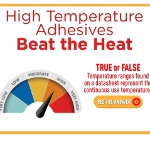 | Test your knowledge: High-temp adhesives quiz
Put your knowledge to the test by trying to answer these key questions on how to choose the right high-temperature-resistant adhesive. The technical experts from Master Bond cover critical information necessary for the selection process, including questions on glass transition temperature and service temperature range. Some of the answers may surprise even the savviest of engineers.
Take the quiz. |
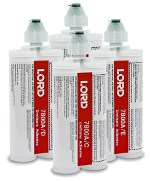 | New fast-cure urethane adhesive speeds assembly
Designed for engineered thermoplastics, e-coated metals, powder painted surfaces, coated metals, composites, and SMC, the LORD 7800 family of fast-cure urethane adhesives will help manufacturers reduce bond and assembly time in the transportation sector. Traditional urethanes cure and build up strength slowly, forcing manufacturers to wait 3 to 12 hours to reach the necessary state to drill, cut, machine, and/or add other components to the assembly. In contrast, the LORD 7800 family cures quickly, reaching those usable strengths often within an hour or less -- with no odor or flammability issues like competing acrylics.
Learn more. |
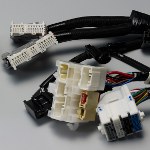 | DURANEX PBT grade for high-voltage automotive applications
The Polyplastics Group is now offering an improved polybutylene terephthalate (PBT) grade that provides improved tracking resistance for a range of high-voltage automotive components. DURANEX PBT CG7030 is a 30 percent glass-filled material that also delivers strong dimensional stability and highly stable electrical resistance and dielectric breakdown properties. After extensive testing, Polyplastics determined that PBTs are more suitable than PA66 for use in high-voltage applications when it comes to moisture absorption, dimensional change rates, and dielectric breakdown strength in high-heat and humid environments.
Learn more. |
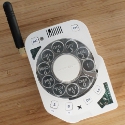 | Weird Science:
Space engineer builds rotary-dial cell phone
Justine Haupt isn't a fan of smartphones, so she designed and built her own weird, wacky, and wonderful alternative -- complete with old-school rotary dial and a curved ePaper display. Now, the design engineer and developer of astronomy instrumentation at Brookhaven National Lab in Long Island, NY, has made available a kit for DIYers. "Builders will still need to find the right rotary dial and order a handful of other bits," Haupt says, "but the 'hard part' (the mainboard and the 3D-printed casing with threaded inserts and buttons) is available for sale." Why create this? "Because in a finicky, annoying, touchscreen world of hyperconnected people using phones they have no control over or understanding of, I wanted something that would be entirely mine, personal, and absolutely tactile," Haupt says, "while also giving me an excuse for not texting."
Learn about Haupt's kit and design process. |
| | Videos+: Technologies and inspiration in action |
Apollo 13 views of the Moon in 4K
A new video from NASA Goddard uses data gathered from the Lunar Reconnaissance Orbiter spacecraft to recreate some of the stunning views of the Moon that the Apollo 13 astronauts saw on their perilous journey around the far side in 1970. These visualizations, in 4K resolution, depict many different views of the lunar surface, starting with earthset and sunrise and concluding with the time Apollo 13 reestablished radio contact with Mission Control. Also depicted is the path of the free return trajectory around the Moon, and a continuous view of the Moon throughout that path. All views have been sped up -- they are not shown in real time. Impressive in detail.
View the video. |
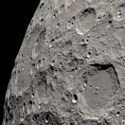 |
|
|